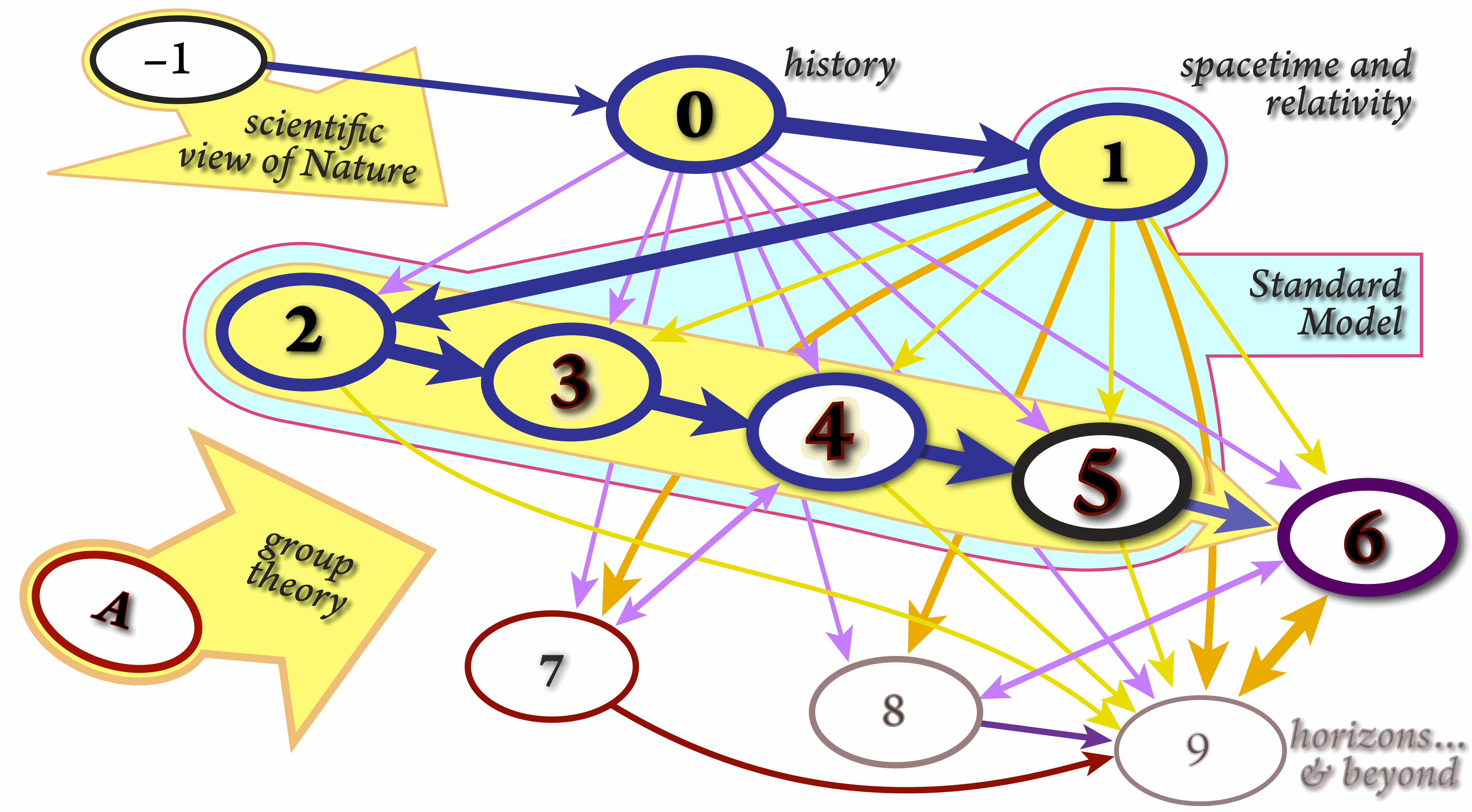
DEPARTMENT OF PHYSICS AND ASTRONOMY -- (202) 806-6245 (main office), -5830 (fax)
Fundamental Particle Physics 2 (PHYS-238-01) TBA;
Office hrs.: TBA, and by appointment (at least one day ahead, confirmed)
[Topics][Daily Schedule][Minimal Requirements][Assignments][e-Gear][Welcome]
|
Component
|
Due time
|
Remark
|
% Grade
|
|---|---|---|---|
| Homework | See in daily schedule | Late HW = 0 credit !!! |
70%
|
| Term project and presentation | End of class | 25 min. + 10 min. questions |
30%
|
This is the second part of the course aiming to give a brief but uncompromising introduction to the contemporary theoretical description of the fundamental physics of elementary particles and fields. After a brief review of material covered in the first part, this course will discuss the chirality of fermions and the (so-called V–A) theory of weak interactions, then its unification with electromagnetism (the Higgs mechanism) and the formulation of the Standard Model. This leads to the need to go beyond, discussing Grand-Unified Theories, general relativity and geometrization of physics, supersymmetry and finally (super)strings, ushering the Student into the fundamental physics of the III millennium.
“Success = 1% inspiration + 99% perspiration”--T.A. Edison
R. |
Review: Yang-Mills theory of gauge interactions |
|---|---|
5. |
Chiral Fermions, Weak (V–A) Interactions, The Standard Model |
6. |
Grand Unification: Beyond the Standard Model |
7. |
General Relativity and Geometrization of Physics |
8. |
Supersymmetries: Unification of Bosons and Fermions |
9. |
Superstrings: Unification of the Foundations of all Reality |

| W. of | Ch. |
Topics to be Covered |
|---|---|---|
| 01/09 | 5.1 |
Landau-Ginzburg description of magnetization; Goldstone theorem; The Higgs effect for U(1) gauge symmetry; |
5.2 |
Asymmetry of weak interactions; The GIM mechanism; U(1)A anomaly; Weak angle; Feynman rules for weak interactions; | |
| 01/23 | 5.3 |
Standard Model; Fermion masses; Neutrino mixing; |
| 01/30 | 6.1 |
Unifications in relativistic quantum physics; The theoretical system of relativistic quantum physics; Glimpses beyond the Standard Model; |
| 02/06 | 6.2 |
The Pati-Salam grand unification; The Georgi-Glashow grand unification; More complex grand unification models; |
| 02/13 | 6.3 |
The hierarchical structure of scientific systems; Indications of self-limitation; |
| 02/20 | 7.1 |
Tensors, the basic definitions; Tensor algebra; Tensor calculus; The metric tensor |
| 02/27 | 7.2 |
Covariant derivative & the Christoffel symbol; Curvature of spacetime; Coupling between matter and gravity; |
| 03/05 | 7.3 |
Special solutions and singularities; Cosmological solutions and time-travel; Spacetime engineering and wormholes; |
| 03/19 | 8.1–2 |
The linear harmonic oscillator and its fermionic extension; The supersymmetric LHO; Supersymmetry in Nature; |
| 03/26 | 8.3 |
Supersymmetric field theory in 3+1-dimensional spacetime; Constrained and gauge superfields; Supersymmetry breaking; |
| 04/02 | 8.4 |
Off-shell supermultiplets; Classification of off-shell supermultiplets in 1-dimension; Supersymmetry and error-correcting codes; |
| 04/09 | 9.1–2 |
A historical yarn of string theory; Quantum gravity; The theoretical system of superstrings; Metamatephysics; Spacetime reconstruction; |
| 04/16 | 9.3 |
Partial compactification; Mirror symmetry; Warped cosmology; Brane-Worlds and localization of matter and interactions; |
| 04/23 | 9.4–5 |
Gauss’s laws, Dirac quantization and consequences; Dualities and dual worldviews; A theory of more than everything. |
The student presentations will be scheduled, interspersed with the lectures, in March & April.
Homework assignments will consist of (1) working out the worked examples end-of-section problems and (2) proof-reading, fact-checking and correcting the developing text, as it is delivered in the classes.
Collaboration policy
One of the aims of this course is to foster collaborative team-work on the subject. The final presentation is however expected to be individual work of each Student and is supposed to showcase the Student’s mastery of the subject.
ADA disclaimer
Howard University is committed to providing an educational environment that
is accessible to all students. In accordance with this policy [details], students
in need of accommodations due to a disability should contact the Office of the Dean for Special Student Services at 202-238-2420, for
verification and determination of reasonable accommodations as soon as possible
after admission to the Law School, or at the beginning of each semester.
© Tristan Hübsch, 2012